Research Projects
forest, soil, & critters
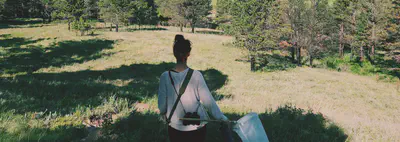
Master’s Research
Yale School of the Environment
Advisors
Oswald J. Schmitz, PhD
Marlyse C. Duguid, PhD
The main goal of my thesis was to investigate the relationship between soil food web predators and nitrogen cycling in eastern temperate forests. The ground beetle family (Coleoptera: Carabidae) has some of the most abundant predators in forest soil food webs. Despite a long history of carabid study, their role in nitrogen cycling remains largely undescribed. As predator generalists, they likely control populations of ants, mites, millipedes, and other invertebrate decomposer groups that fragment plant litter and influence nitrogen cycling. I conducted two experiments at the Yale-Myers Forest in eastern Connecticut. My hope is to better understand how these trophic interactions in soil invertebrate groups are important for decomposition, nitrogen cycling, and ecosystem function.
Check out my research spotlight in The Forest School’s newsletter
Trophic Cascade Project
The leading question for the first chapter of my master’s work was How do functional differences in ground beetles contribute to nitrogen cycling in eastern temperate old and young forests? To address this question we set up a trophic cascade experiment using mesocosm cages (pictured below) with live ground beetles. We measured the response of available nitrogen over the 68-day experiment. We set up cages in both young and old forest plots. Our results support a growing body of literature discussing how predators influence nitrogen cycling. Here our results suggest available nitrogen increases with the addition of predators, at least on a short time scale. Stay tuned for the publication.
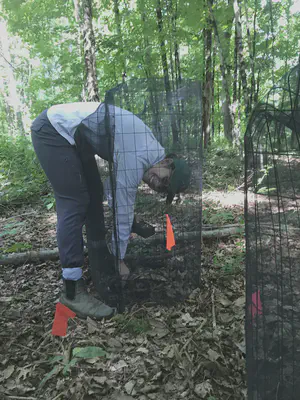
Nitrogen Tracer Experiment
To better understand how larger groups of soil animals interact with functional groups of ground beetles and contribute to nitrogen cycling, we set up an experiment using a stable isotope of nitrogen (15-N) to trace the flow of nitrogen from the soil litter layer to invertebrate groups and ground beetles collected in pitfall traps. The 15-N was applied through leaf litter, and due to a drought in the summer of 2022 and lack of decomposition, we didn’t detect a 15-N signal in the soil or invertebrate groups. We’re running the experiment for a second (and maybe a third!) year to see what happens. Stay tuned for the publication.
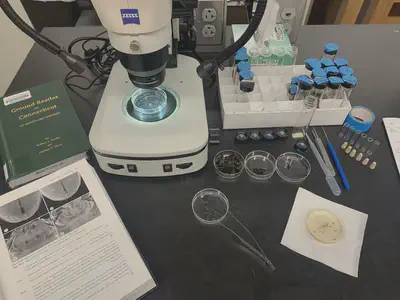
Undergrad Research
The Morton Arboretum, Center for Tree Science
Advisors
Meghan G. Midgley, Ph.D.
Robert W. Buchkowski, Ph.D.
I conducted research under the mentorship of Drs. Meghan Midgley and Robert Buchkowski in the Soil Ecology lab at The Morton Arboretum’s Center for Tree Science in Lise, Illinois from January 2020 – August 2021. We carried out two projects on how tree species influence soil properties and invertebrate food webs in temperate forests.
Summer 2021 - REEF
As a Research Experience Extension Fellow (REEF) I was able to return to the arboretum for a second year so we could carry out an experiment in the arboretum monoculture forestry plots on how tree traits predict the abundance and diversity of soil macroinvertebrates across tree species. We set up cover boards, a quick way to survey macroinvertebrates, in 18 forestry plots and are tying tree and soil properties to the invertebrate community composition. Our research suggests tree and soil traits predict macroinvertebrate communities! Stay tuned for the publication.
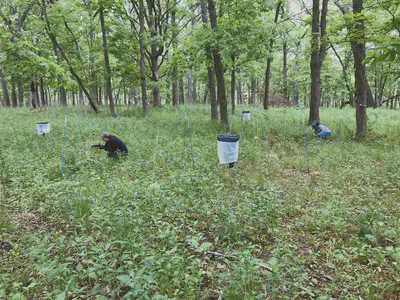
Summer 2020 - REU
My covid summer research with the arboretum as an NSF Research Experiences for Undergraduates (REU) student meant an opportunity for me to learn RStudio. We shifted our original project to use data that was publically available from NSF’s National Ecological Observatory Network (NEON) archive of ground beetle data. Turns out, the abundance of evergreen trees really influences ground beetle communities! Stay tuned for the publication.
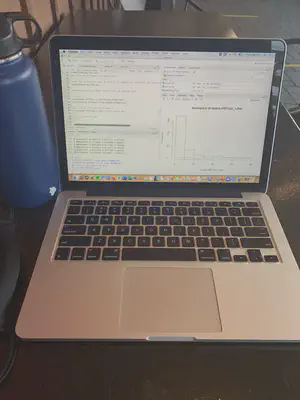
Thanks for reading!🪲